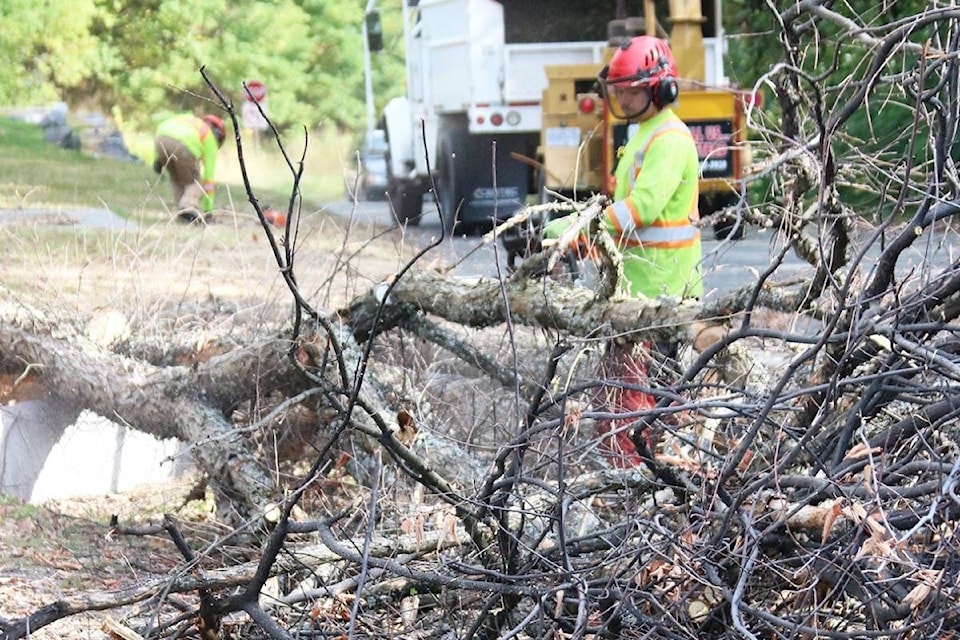Dutch elm disease is the true culprit behind a mishap that happened on a Grade 5/6 class outing in Warfield on Friday.
A young girl accidentally became pinned under a pile of logs in Beaver Bend Park, which is right across the highway from Webster Elementary School.
Read more: Warfield digs into new bike track
The students were on their way back to the classroom for 2:15 p.m. dismissal, when she ran atop a pile of snow that happened to be covering fallen timber.
The young girl slipped and became pinned under her left side. In this day and age of cell phones, the teacher immediately called the school to report the accident.
The parents were notified and the school principal quickly arrived on scene. Long story short, the young girl could not be dug out, she was trapped, and first responders were needed. There was an inadvertent gap in communication, so the fire department didn’t actually arrive until 2:30 p.m.
But within 30 minutes, the student was extricated by the firemen using a rope rescue system to haul her up. She was transferred into a waiting ambulance, and fortunately, other than being cold and shaken, the girl was taken home by her parents.
A positive outcome is always a good teachable moment for all involved, in terms of what worked and what didn’t.
But the question is, why were the logs there in the first place?
And what will the village do to avoid this from happening again?
That’s where tree disease comes in, and the havoc it is causing throughout the small municipality both financially and logistically.
“The Village of Warfield is currently experiencing Dutch elm disease,” began administrator Jackie Patridge.
“It strikes randomly and suddenly and seems to kill a tree in a short period of time,” she told the Times.
“The village doubled the tree removal budget last year to nearly $60,000 and may have to budget even more for 2019.”
The park behind the outdoor swimming pool does not have a single elm tree left standing, she pointed out.
The fate of elms is similar in Beaver Bend Park, a gully-shaped linear space located nearby the pool, just off Murray and Forrest drives.
The park has maintained a mostly natural existence, populated with mature maple, and until recently, elm trees.
Last summer those elm trees started dying.
“Since the trees were so tall, a tree removal company with a bucket truck was required to service them,” said Patridge. “The area experienced a wind storm last summer, which limited the amount of time the truck was in Warfield, as many other areas were impacted as well.”
Then two large dead elm trees fell down into the park, illustrating just how unstable they were.
“The decision was made to cut down the remaining trees before winter, for safety reasons,” she clarified. “The village works crew cleaned up as much as possible, (however), fall rain and winter snow tend to turn the bottom of the gully very swampy.”
Patridge says inclement conditions made it impossible to maneuver the heavy equipment required to remove any more of the logs.
“The remaining logs were piled on the side slope of the gully, away from the path in the middle of the park,” she added.
“As planned, the remaining logs will be removed in the spring.”
Dutch elm disease is a fungus that is spread by both a native and an introduced bark beetle whose larvae tunnel under the outer bark and create distinctive feeding ‘galleries,’ according to Tree Canada.
The first signs of the disease are upper branches dying and leaves turning yellow in mid-summer. Gradually, the damage spreads to the rest of the tree which eventually dies. Fungicide treatments are available for individual trees but they are costly, must be repeated regularly, and may only prolong the life of the treated tree by five to 10 years.
